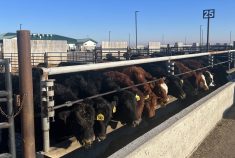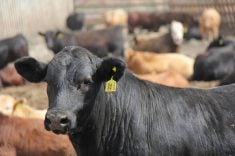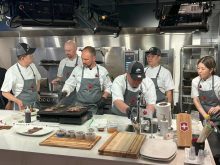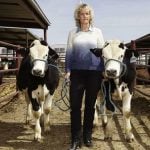Antimicrobial resistance is once again a hot topic among regulators. Here’s a brief introduction to antibiotic resistance. Future columns will summarize some antimicrobial use and resistance research supported by the checkoff-funded Beef Cattle Research Council.
In 1929, Professor Alexander Fleming reported that Penicillium mould produced a substance that could kill the bacteria found in strep throat (Staphylococcus), meningitis (Meningococcus), pneumonia (Pneumococcus) and gonorrhea (Gonococcus), to the great relief of parents, children and First World War veterans. In 1930, Dr. Paine (a former student of Dr. Fleming’s) obtained some of the Penicillium mould cultures, and used the penicillin to treat four patients with eye infections. Dr. Paine also cultured and identifi ed the bacteria sampled from the infected eyes, and tested penicillin’s activity against the cultured bacteria. Of the four patients (and cultures) treated, only three responded. The bacteria from the patient that didn’t respond to penicillin were Staphylococcus (even though Paine’s penicillin had been effective against another Staph infection in a different patient). This suggests that the eye infection that didn’t respond may have been caused by a strain of Staphylococcus that was naturally resistant to the concentration of penicillin that Dr. Paine used, more than a decade before injectable penicillin was mass produced and widely used during the Second World War.
Read Also

Building demand together: The impact of Canada’s beef import levy
The beef import levy has become a central tool for ensuring balance in Canada’s beef industry
If none of the micro-organisms causing a disease are naturally resistant, then that antimicrobial will be a very effective tool to treat the disease. But if some microbes are naturally resistant, then using that antimicrobial will only affect those that aren’t. This allows the resistant microbes to survive, reproduce and eventually become the predominant strain. This is why some antimicrobials appear to lose their effectiveness over time; the antimicrobial doesn’t change, but the target population becomes more resistant.
How does antimicrobial resistance originate?
Antimicrobial resistance occurs naturally. Some groups of microbes have particular characteristics that provide them with “intrinsic resistance” to particular antimicrobials. For example, the outer cell membrane and impermeable cell walls of Gram negative bacteria likeE. coliprovide them with more intrinsic resistance to penicillin than certain other microbes. “Acquired resistance” occurs due to genetic change resulting from random mutations in the microbial DNA sequence. These mutations are happening all the time in microbes, plants and animals. Using antimicrobials does not cause these mutations to occur; antimicrobial use simply tilts the playing field in favour of those microbes that already carry those mutations.
How does antimicrobial resistance spread?
Antimicrobial resistance spreads in two ways. The simplest way is described above; resistant microbes are not killed by the antimicrobial, continue to reproduce, and produce resistant offspring. This is known as vertical transfer. Repeated exposure to the same antimicrobial increases the proportion of resistant microbes in the population.
In horizontal transfer, antimicrobial resistance genes are traded among bacteria. There are three main horizontal transfer mechanisms. In conjugation, antimicrobial resistance genes are naturally traded through a temporary bridge between two bacteria. This genetic swap-meet does not create new bacteria, but the two bacteria end up with different combinations of genes than they started with. These combinations are passed to offspring through vertical transfer. In transformation, naked DNA is released from one bacterium into the environment, and is taken up by another. In this case, DNA from one bacterial species may be transferred to an unrelated species. In transduction, bacterial DNA is transferred from one bacterium to another through a bacterial virus. The new DNA obtained through horizontal transfer is then passed on to future generations through vertical transfer.
If antimicrobial resistance is natural, why are we concerned?
Antimicrobial resistance is discouraged by appropriate prescription, use and disposal of antimicrobials in human, pet, and livestock medicine. Improperly prescribing antimicrobials can increase the genetic selection pressure favouring resistant microbes. Failing to properly follow the prescription (e. g. stopping treatment as soon as symptoms disappear, rather than following the full prescribed course of treatment), administer (e. g. using an intermuscular injection when a subcutaneous injection is prescribed) or improperly disposing of antimicrobials may expose some bacteria to a lower, more survivable dose. The survivors reproduce and perpetuate these antimicrobial resistance genes.
People who rarely contact livestock likely encounter antimicrobial resistant pathogens through exposure to other sick humans or pets. However, there are concerns that improper antimicrobial use in livestock may also contribute to the development of human pathogens that are resistant to antimicrobials.
Producers enrolled on Canada’s Verified Beef Production program keep records to demonstrate that they follow proper antimicrobial storage, dosage, administration routes and disposal practices.
ReynoldBergenisthesciencedirectorofBeefCattleResearch Council.
















